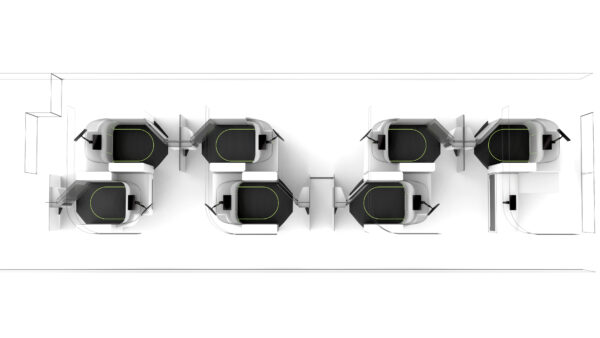Australian researchers have come up with a design to improve airport security checks in the United States (U.S.), which may soon mitigate long airport waiting times.
Micro-X, an Australian tech company, has partnered with the Design Health Collab at Monash University to streamline crucial airport security checkpoint processes across the U.S. and increase aviation passenger safety.
The U.S. Department of Homeland Security (DHS) Science and Technology Directorate (S&T) awarded two contracts to Micro-X in September, one to extend its development contract for the Miniaturised CT Baggage Scanner and the other to continue its Passenger Self-Screening Checkpoint design.
The two DHS contracts are now valued at US$4.5 million.
The baggage scanner extension, which is contracted for an additional US$0.44 million, will deliver a second functioning prototype in early 2023 while the DHS is testing the first prototype.

The integrated system allows scanning passengers and their possessions simultaneously while meeting the strict safeguards of travel security.
The design also uses a much smaller CT scanning system than those currently used in airports, allowing more checkpoints to operate, reducing queues and frustrating bottlenecks, according to a statement of Monash University.
Dr Nyein Chan Aung, the lead design researcher from Monash University, said implementing the new imaging technologies could transform the airport security experience for both travellers and staff.
“This new system design reconsiders every element to serve the user, including the industrial design, floor plan layout, lighting, ergonomics, materials, and user interfaces,” he said.
“The checkpoint aims to maintain effective security while improving the throughput and passenger and operator experience.”
The new design will also offer a “pre-warning” prompt, which alerts passengers of forgotten objects in their pockets to help them avoid annoying alarms when they go through on-person screening.
“Undertaking a user-centred design approach is critical to the success of new technologies and ensuring that the workflows allow for optimal system performance while maintaining ease-of-use, convenience, and dignity for passengers from all walks of life,” Aung said.

Dr Brian Gonzales, a chief scientist of Micro-X and the CEO of the company’s U.S. subsidiary, said that for world-class scanning technology to be effective, they need to be combined with great design.
“The interface between the checkpoint system and the person is what makes the technology work for humans,” he said.
“People need to have a good experience, and the design needs to consider people’s wellbeing, movement, and flow.”








